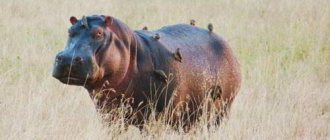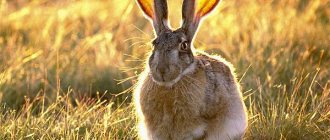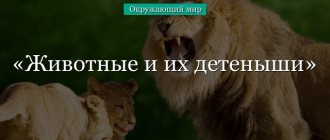Predators
Arctic fox
Otherwise called the polar fox, it belongs to the canine family. As for domestic animals, it resembles a Spitz dog. Like domestic quadrupeds, Arctic foxes are born blind. The eyes open after about 2 weeks.
Animals of the Arctic zone are good parents and partners. As soon as the female’s belly becomes round, the male begins to hunt for her, feeding the chosen one and the offspring even before birth. If someone else's litter is left without parents, the Arctic foxes that find the puppies adopt the babies. Therefore, 40 cubs are sometimes found in the burrows of polar foxes. The average litter size of Arctic foxes is 8 puppies.
Wolf
Wolves are born not only blind, but also deaf. After a few months, the puppies become powerful, ruthless predators. Wolves eat their victims alive. However, the point is not so much in sadistic inclinations, but in the structure of the teeth. Wolves are unable to kill prey quickly.
Scientists wonder how man domesticated the wolf. Modern grays cannot be trained, even having grown up in captivity and not knowing wild life. For now, the question remains unanswered.
Polar bear
This is the largest warm-blooded predator on the planet. Stretching up to 3 meters in length, some polar bears weigh about a ton. The giant subspecies grew up to 4 meters and 1200 kilos. He left the animal world of the Arctic .
Polar bears may or may not hibernate. The first option is usually chosen by pregnant females. Other individuals continue to hunt mainly aquatic inhabitants.
Insects
The large number of insectivorous birds in the northern regions is due to the presence of numerous insects - mosquitoes, midges, flies and beetles. The insect world in the Arctic is very diverse, especially in the polar tundra region, where with the onset of the summer season countless mosquitoes, gadflies and small midges appear.
Burning midge
The insect (Culicoides pulicaris) is capable of producing several generations during the warm season, and is today a widespread and common blood-sucking midge, not found only in the tundra.
Karamora
Insects (Tipulidae) belong to the family Diptera and the suborder Nematocera. The body length of many long-legged mosquitoes varies between 2-60 mm, but sometimes larger representatives of the order are found.
Chironomidae
The mosquito (Chironomidae) belongs to the family of the order Diptera and owes its name to the characteristic sound that the insect's wings make. Adults have underdeveloped mouthparts and are harmless to humans.
Wingless springtails
The northern insect (Collembola) is a small and very nimble arthropod, a primarily wingless form, usually resembling a tail with a common jumping appendage.
Return to content
Reptiles and amphibians
The harsh climatic conditions of the Arctic do not allow various cold-blooded animals, including reptiles and amphibians, to spread as widely as possible. At the same time, the northern territories have become quite suitable habitat for four species of lizards.
Viviparous lizard
The scaly reptile (Zootoca vivipara) belongs to the family True lizards and the monotypic genus Forest lizards (Zootoca). For some time, such a reptile belonged to the genus Green lizards (Lacerta). A well-swimming animal has a body size of 15-18 cm, of which approximately 10-11 cm is in the tail. The body color is brown, with dark stripes that stretch along the sides and in the middle of the back. The lower part of the body is light in color, with a greenish-yellowish, brick-red or orange tint. Males of the species have a slimmer build and brighter colors.
Siberian newt
The four-toed newt (Salamandrella keyserlingii) is a very striking representative of the salamander family. An adult tailed amphibian has a body size of 12-13 cm, of which less than half is in the tail. The animal has a wide and flattened head, as well as a laterally compressed tail, which is completely devoid of leathery fin folds. The color of the reptile has a grayish-brown or brownish color with the presence of small spots and a fairly light longitudinal stripe in the back area.
Semirechensky frogtooth
The Djungarian newt (Ranodon sibiricus) is a tailed amphibian from the salamander family (Hynobiidae). An endangered and very rare species today, its body length ranges from 15-18 cm, but some individuals reach sizes of 20 cm, of which the tail part occupies a little more than half. The average body weight of a sexually mature individual can vary between 20-25 g. On the sides of the body there are from 11 to 13 intercostal and clearly visible grooves. The tail part is laterally compressed and has a developed fin fold in the dorsal area. The color of the reptile varies from yellow-brown to dark olive and greenish-gray, often with spots.
tree frog
The tailless amphibian (Rana sylvatica) is capable of freezing to the point of ice in the harsh winter. An amphibian in this state does not breathe, and the heart and circulatory system stop. When the weather gets warmer, the frog “thaws out” quite quickly, which allows it to return to normal life. Representatives of the species are distinguished by large eyes, a clearly triangular-shaped muzzle, and a yellow-brown, gray, orange, pink, brown or dark gray-green dorsal area. The main background is supplemented with blackish or dark brown spots.
Return to content








